As I have mentioned in my previous blogs (see Part 2 and Part 3), my great-grandfather, Robert, was a man of many passions.
He deeply loved his farm - the lifestyle, the animals, and the bucolic landscapes, to name a few. Unfortunately, as some of you may know, a life spent working as a farmer does not leave much time for anything else! So when he retired in 1960 he devoted himself to his former hobbies with an incredible and almost insatiable energy.
Writing was one of them. Besides compiling his memoirs he also wrote long philosophical texts which he liked to introduce using huge calligraphed capital letters, watercolor painted and often associated with the drawing of a small animal or object (I will show you some of these in later posts).
He also loved to read and sometimes had fun embellishing the story books he had with various drawings and illustrations. I guess he must have thought the stories were missing something... and to be honest, if you've ever turned the pages of older books, it is quite rare to find any worthwhile illustrations, let alone any pictures at all! - unlike the books we have today.
He would even write and draw on postcards which he would then send to his grandchildren.
Every chance he had, every pretext he could find, was a great excuse to draw and paint.
Philosophy, reading, writing, his encounters, nature walks and even politics were all an inspiration for his brush strokes.
The drawings and paintings that follow reflect in three different categories the style of his works.
Watercolors
This is a painting of the small town of St Gengoux-le-National.
The Burgundian style of winemaker houses in the foreground is easily distinguishable through its stone staircase and upper "gallery", an elevated outdoor porch. These houses were the dwellings of the poor workers of the vineyards. They most commonly did not own them but were lodged by the rich vineyard owners and often lived with up to a dozen people in two rooms.
I believe my great-grandfather depicted the street using a lot of color despite the gray sky because it was a very lively and noisy neighborhood. In fact, it is a bit strange to see no one in the streets.
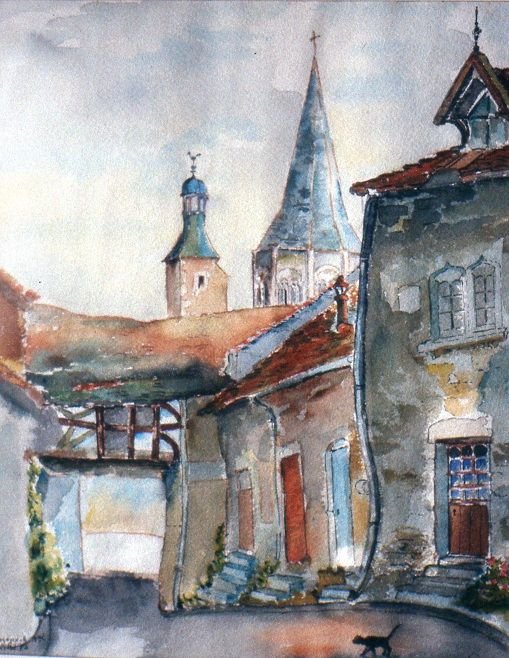
This watercolor painting represents one of the alleyways of St Gengoux-le-National.
In the background is the church steeple and the donjon.
The bridge you see connects both sides of the alley lined with 15th century old houses. A black cat crossing the street is here to remind us that there is life.
My great-grandfather often used the gray-blue or slate color in his watercolors. In my opinion, it is there to beautify walls and roofs whose colors have been grayed out throughout the years.
The church of Saint-Gengoux was built in 1120 by the Benedictines of Cluny under the name of the saint named Gengoux. The dungeon with its renaissance lantern was built in 1556 to gain access to the bells and monitor the surrounding valleys.
The wooden house is a half-timbered house with Burgundian architecture from the second quarter of the 15th century, whose foundations date back to 1410 and the openings are of Flamboyant Gothic style.
This alleyway has remained to this day, exactly the same as it was depicted by my great-grandfather (minus the black cat).

Drawings
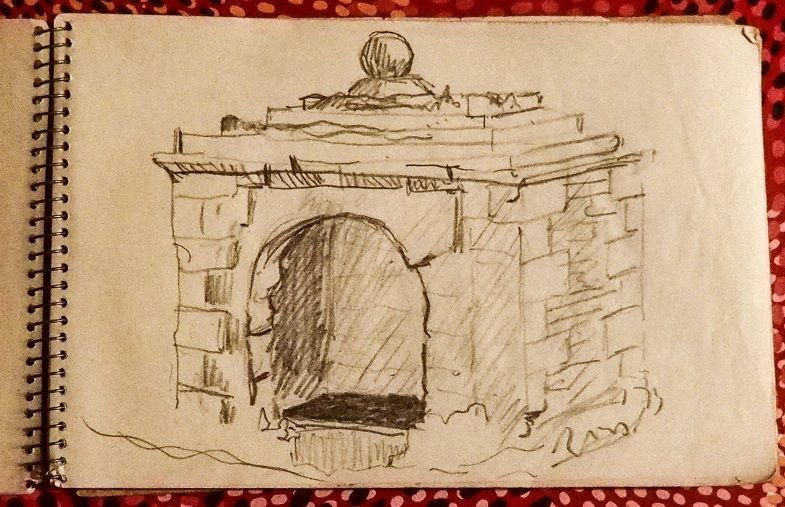
This is a sketch of what looks like a fireplace but is actually a fountain. This lovely stone structure can be found in the village of Balleure and was made to house and protect a natural spring.
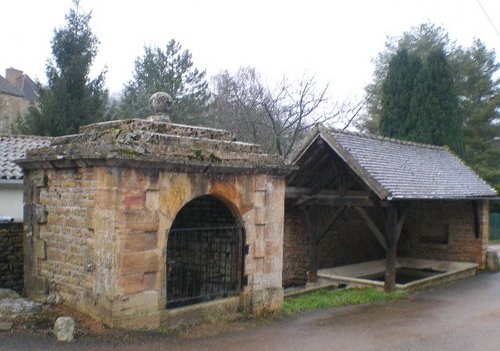 View of the same fountain today | 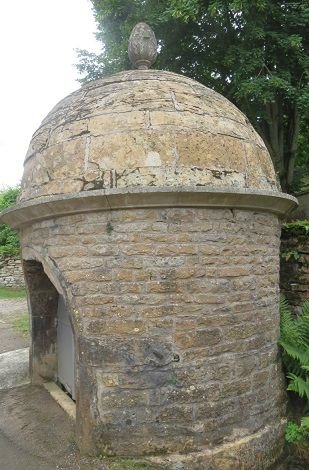 Circular fountain also in Balleure |
|---|
Many of these constructions can be found in Burgundy, and were most commonly built around the 19th century.
The gate and door you see on the photos above protect their entrance in order to block animals from entering, but may have also been a way to control human usage as some towns and villages would charge a fee.


Oil on canvas
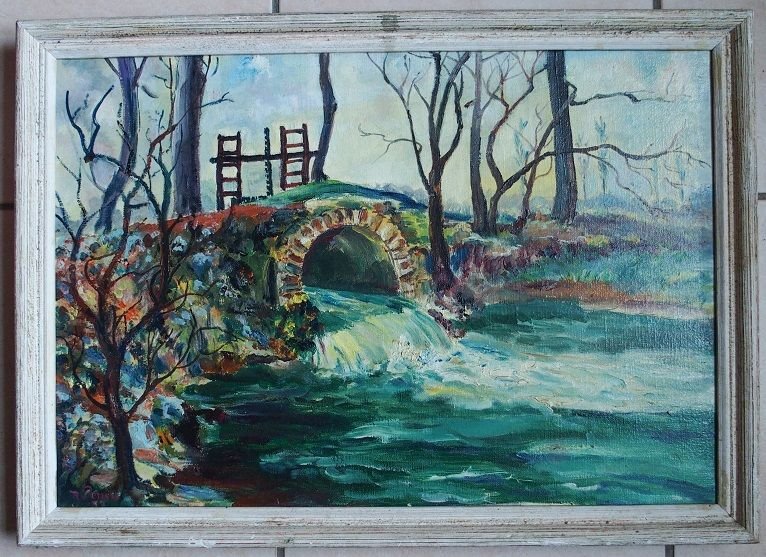
This opening in the dike is made of stone and is located near the water mill of Nanceau, on the river "La Grosne".
There must be a water reservoir nearby because what we see here is a dyke with a lock lift that can open or close.
When the mill did not have enough water to function, they would open the lock hatch.
My great-grandfather must have painted this in the Winter from the looks of the trees.
I assume that in winter, the hatch was open all the time.


 The fragility of Life |  The beginnings of an unexpected adventure |
|---|---|
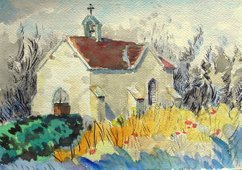 The treasures left behind by my great-grandfather #3 | _edited.jpg) The treasures left behind by my great-grandfather #2 |
“Learning is not a race for information, it is a walk of discovery” - Jane Healy

